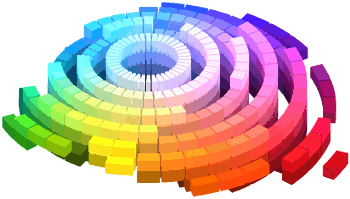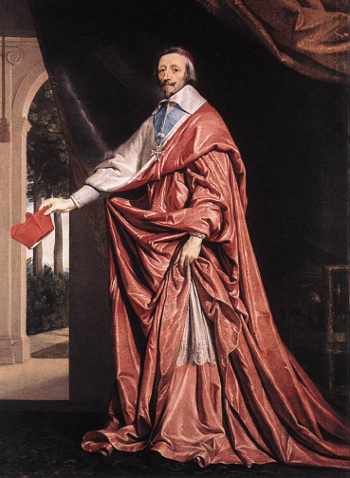Power Tie
June 9, 2011
The first
computer program I was paid to write was a
computer-aided instruction (CAI) program in
psychology. It's hard to believe, but the program was written in
APL, and the only I/O device was a
typewriter terminal. Since the only formal instruction in computer programming I've ever had was a five hour short course in
Fortran taught by another student, this APL program was quite a hack. It would look quite different if I were to write it today; but it worked, the psychology professor who wanted it was happy, and I got a little spending money.
The
physical sciences are quite different from psychology, but the one thing that links these disparate fields is
experiment. Experiment is the centerpiece of the
scientific method, because everyone believes a good experiment, and
experimentalists are always concerned about doing things right. I remember a commentary about science that a
theoretician always has full faith in his theories, but an experimentalist can still find some fault with his published results.
Color is easily quantified in a physical measurement. You just measure the
spectrum of the light.
Color as it exists to the mind is an entirely different thing. One man's mauve is another man's purple. Red was my favorite color when I was young, and I especially enjoyed the red bulbs on our
Christmas tree. But, what, exactly, is the "quality of redness?" That's something I discussed in a
previous article (The Quality of Chairness, December 3, 2010).
Andrew Elliot, a professor of psychology at the
University of Rochester, has been performing some interesting experiments that involve the color, red.[1-2] The most recent of these, published in the
Journal, Emotion,[2] show that humans react more forcefully and more quickly when they see red, but they're oblivious to the idea that the color has that affect on them.

sRGB approximation of the of the colors appearing in the 1929 Munsell Book of Color.
Image via Wikimedia Commons by "SharkD)
The experiments were simple, but revealing. In a first experiment, thirty 4th-10th-grade
students were instructed to pinch and hold a metal clasp. Just before this task, they were instructed to read aloud their identification number printed in either gray or red crayon. In a second experiment, forty-six
undergraduate students were instructed to squeeze a handgrip as hard as possible with their
dominant hand whenever they saw the word, "squeeze," on a computer display. The word was displayed on a red, gray or blue background.
As any careful experimentalist, Elliot worked to suppress any interfering
variables. In all cases, the colors were presented with
equivalent properties, so that variables such as color intensity or
saturation would not confound the results. Says Elliot, "Many color psychology studies in the past have failed to account for these independent variables, so the results have been ambiguous." Also, the experiments used what's called an isometrical response that measures just the
energy output of the test subjects in a way that's isolated from
behavior.
In both experiments, red caused a significant increase in the exerted force. In the handgrip experiment, red also increased the speed of the response. Red was beneficial to the performance of these tasks, but its affect can be quite different in other scenarios. Co-author of the study,
Henk Aarts, a professor of psychology at
Utrecht University,
The Netherlands, points out that previous studies have shown that
athletes are more likely to lose to an opponent wearing red, and student exposure to red results in poor test performance.[1]
The title of this article, "Power Tie," alludes to the idea that wearing a red tie is beneficial to
businessmen. Other experiments by University of Rochester psychologists have shown that men are attracted to women wearing red, and
vice versa.[3-5] Now, that's
science you can use.

Power tie to an extreme.
A portrait of Cardinal Richelieu by Philippe de Champaigne (c. 1637).
Image via Wikimedia Commons
![]()
References:
- Susan Hagen, "Color Red Increases the Speed and Strength of Reactions," University of Rochester Press Release, June 2, 2011.
- Andrew J. Elliot and Henk Aarts, "Perception of the color red enhances the force and velocity of motor output," Emotion, vol. 11, no. 2 (April, 2011), pp. 445-449.
- Susan Hagen, "Psychological Study Reveals That Red Enhances Men's Attraction to Women," University of Rochester Press Release, October 28, 2011.
- Liz Hurley, "Wearing red 'boosts attraction'," BBC News, October 28, 2008.
- Susan Hagen, "Women Attracted to Men in Red, Research Shows," University of Rochester Press Release, August 2, 2011.
Permanent Link to this article
Linked Keywords: Computer program; computer-aided instruction; psychology; APL; IBM Selectric typewriter; Fortran; physical science; experiment; scientific method; experimentalist; theoretician; color; spectrum; color perception; Christmas tree; Andrew Elliot; University of Rochester; scientific journal; Wikimedia Commons; student; undergraduate student; handedness; dominant hand; variable; HSL; HSV; saturation; muscle; energy output; human behavior; Henk Aarts; Utrecht University; The Netherlands; athlete; Jacob Marley; businessmen; science you can use; Cardinal Richelieu.